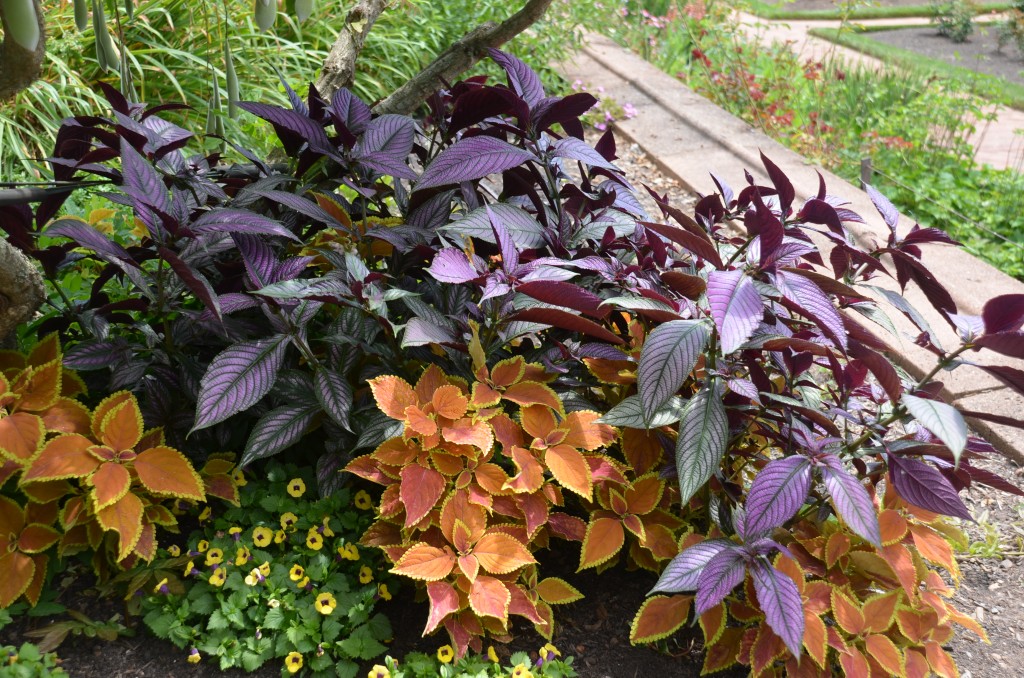The iridescent purple foliage of Persian shield (Strobilanthes dyerianus) radiates in a warm summer garden in the U.S. Here it is treated as an annual (USDA hardiness zones 9-11). Persian shield is native to tropical Myanmar (formerly Burma), where it is a 3-4 feet tall soft-stemmed evergreen shrub or subshrub. In temperate regions it grows only 1-3 feet.
Dark green leaves (to 8 inches long) are flushed with silvery-purple variegation above and dark purplish tints beneath. In the tropics, tiny violet 5-lobed flowers appear in short cone-shaped inflorescences. It rarely blooms in non-hardy regions.
Persian shield prefers compost-rich, moist and fertile soil. Two keys to successfully growing Persian shield are light exposure and plentiful soil moisture. Depending where you garden, plant in full sun or partial sun or moderate shade. It thrives in the heat and humidity of the southeastern U.S. In cooler areas (zones 4-6), full day sunlight is ideal. Where summer temperatures sizzle, a few hours of early morning sunlight is adequate. Partial shade brings out the deepest purple in the leaves.
From spring through summer Persian shield plant responds to constant feeding. Fertilize it with a water soluble products such as Miracle-Gro™, Nature’s Source™, or Daniels™ at half rate and twice as often (contrary to package directions) to maximize shoot growth and not to burn the roots.
Pinch stems every few weeks to develop a compact, bushy plant. Use the pinched cuttings to start new plants (see below). Otherwise, Persian shield will develop a 3 feet stem, that will likely need staking to prevent flop over. Persian shield has few, if any diseases and pest problems. Occasionally, spider mites may discolor the leaves.
In the fall, with killing frost pending, take cuttings from garden plants and grow them as house plants over winter. Cuttings easily root within 3 weeks in moist sand and/or vermiculite and held in a plastic tent for high humidity. Provide moderate light, but not direct sunlight, so as not to burn the tender unrooted cuttings. Transplant into good potting soil and keep adequately watered and fertilized until mid to late spring.


 Posted in
Posted in 
